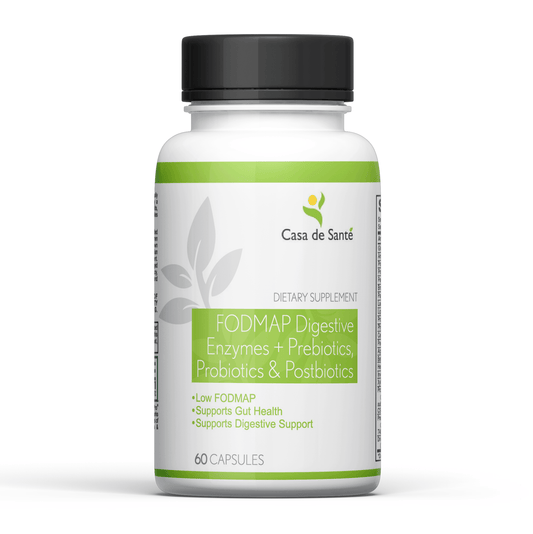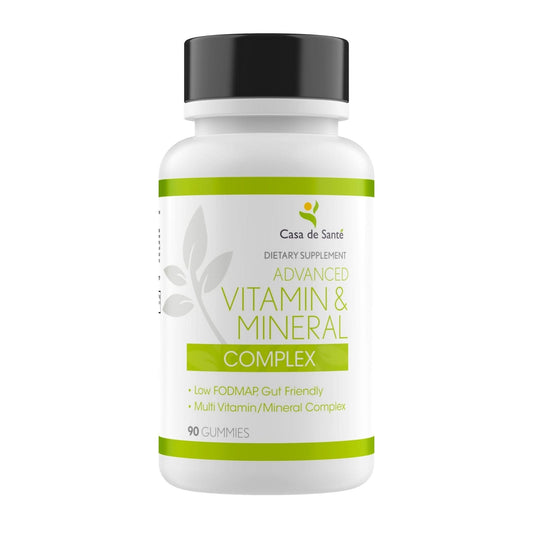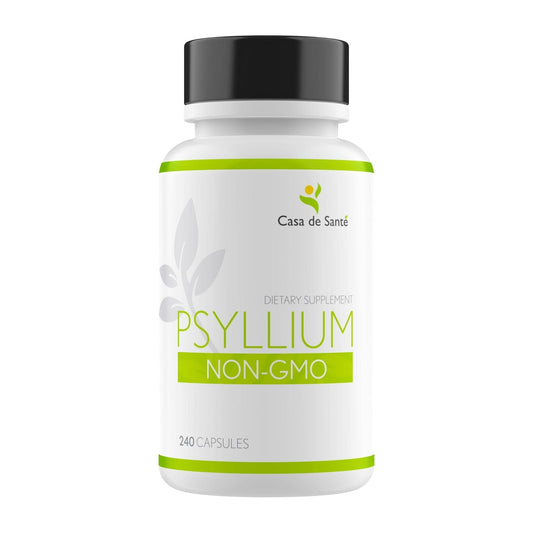Is Amaranth Flour Low FODMAP
Is Amaranth Flour Low FODMAP
Understanding FODMAPs
FODMAPs are a group of carbohydrates that can cause digestive symptoms in some people, particularly those with irritable bowel syndrome (IBS). These carbohydrates are poorly absorbed in the small intestine and can ferment in the colon, leading to bloating, gas, abdominal pain, and diarrhea or constipation.
What are FODMAPs?
FODMAP stands for Fermentable Oligosaccharides, Disaccharides, Monosaccharides, and Polyols. These are types of carbohydrates that can be found in a variety of foods. Examples of common FODMAPs include fructose (found in fruits and honey), lactose (found in dairy products), fructans (found in wheat and onions), galactans (found in legumes), and polyols (found in certain fruits and artificial sweeteners).
Why are Low FODMAP Diets Important?
For individuals with IBS or other digestive disorders, following a low FODMAP diet can help alleviate symptoms and improve overall digestive health. By reducing the intake of FODMAPs, it is possible to reduce the fermentation that occurs in the gut and minimize the associated symptoms.
When it comes to understanding FODMAPs, it is important to delve deeper into the specific types of carbohydrates that fall under this category. Fructose, for example, is a naturally occurring sugar found in fruits and honey. While it is generally well-tolerated by most individuals, those with IBS may experience symptoms when consuming foods high in fructose. This is because the small intestine may have difficulty absorbing fructose, leading to its fermentation in the colon and subsequent digestive discomfort.
Lactose, another type of FODMAP, is a sugar found in dairy products. Individuals who are lactose intolerant lack the enzyme lactase, which is responsible for breaking down lactose in the small intestine. As a result, undigested lactose can reach the colon where it is fermented by bacteria, causing symptoms such as bloating, gas, and diarrhea.
Fructans, which are found in wheat and onions, are a type of carbohydrate that can also trigger symptoms in individuals with IBS. These chains of fructose molecules can be difficult to digest for some people, leading to their fermentation in the gut and subsequent discomfort.
Galactans, on the other hand, are carbohydrates found in legumes such as beans, lentils, and chickpeas. These complex sugars can be challenging for the small intestine to break down, resulting in their fermentation in the colon and the associated symptoms of bloating and gas.
Polyols, the last category of FODMAPs, are sugar alcohols found in certain fruits like apples, pears, and stone fruits, as well as in artificial sweeteners. These substances are poorly absorbed by the small intestine and can draw water into the colon, leading to diarrhea in some individuals.
By understanding the specific types of FODMAPs and their sources, individuals with IBS can make informed choices about their diet. Following a low FODMAP diet involves avoiding or limiting foods high in these carbohydrates, which can help reduce the fermentation and subsequent symptoms in the gut.
It is important to note that a low FODMAP diet should be followed under the guidance of a healthcare professional or registered dietitian, as it may require careful planning to ensure adequate nutrient intake. Additionally, the elimination phase of the diet is typically followed by a reintroduction phase, where FODMAP-containing foods are gradually reintroduced to identify individual tolerance levels.
Overall, understanding FODMAPs and their role in digestive health can empower individuals with IBS to make dietary choices that support their well-being and minimize symptoms. By working with healthcare professionals, individuals can find a personalized approach to managing their digestive health and improving their quality of life.
The Nutritional Profile of Amaranth Flour
Amaranth flour is derived from the seeds of the amaranth plant, which is known for its high nutritional value. It is naturally gluten-free and rich in essential nutrients.
The amaranth plant has been cultivated for thousands of years and is considered a staple food in many cultures. The seeds are harvested and ground into a fine flour, which can be used in a variety of recipes.
The Health Benefits of Amaranth Flour
Amaranth flour is a good source of protein, containing all the essential amino acids. This makes it an excellent choice for individuals following a vegetarian or vegan diet, as it can help meet their protein needs.
In addition to protein, amaranth flour is also rich in dietary fiber. Fiber is essential for maintaining a healthy digestive system and can help prevent constipation. It also plays a role in regulating blood sugar levels, making amaranth flour a good choice for individuals with diabetes or those looking to manage their blood sugar levels.
Amaranth flour is packed with vitamins and minerals that are essential for overall health. It is particularly high in iron, which is important for the production of red blood cells and oxygen transport throughout the body. Calcium, magnesium, and potassium are also abundant in amaranth flour, supporting bone health, muscle function, and electrolyte balance.
The Potential Drawbacks of Amaranth Flour
While amaranth flour offers many health benefits, it is important to note that it is relatively high in carbohydrates. This means that individuals who are following a low carb diet may need to consider their portion sizes when incorporating amaranth flour into their meals.
It is also important to purchase amaranth flour from a reputable source to ensure its quality and avoid any potential contamination. As with any food product, there is a risk of contamination during processing or storage. By choosing a trusted brand or supplier, you can minimize this risk and enjoy the nutritional benefits of amaranth flour with peace of mind.
Amaranth flour can be used in a variety of recipes, including bread, pancakes, and cookies. Its slightly nutty flavor adds a unique taste to dishes and can be a great alternative to traditional wheat flour.
In conclusion, amaranth flour is a nutritious and versatile ingredient that can be incorporated into a balanced diet. Its high protein content, fiber, and abundance of vitamins and minerals make it a valuable addition to any pantry. Whether you are looking to boost your protein intake, support digestive health, or diversify your cooking repertoire, amaranth flour is worth considering.
Amaranth Flour and FODMAPs
Amaranth flour can be a suitable option for individuals following a low FODMAP diet. This ancient grain has gained popularity in recent years due to its nutritional benefits and versatility in cooking.
The FODMAP Content in Amaranth Flour
According to Monash University, amaranth flour is considered low FODMAP and can be consumed in moderate amounts without triggering symptoms in most individuals. This is great news for those who are sensitive to certain carbohydrates that can cause digestive issues.
For those who are unfamiliar with FODMAPs, it stands for Fermentable Oligosaccharides, Disaccharides, Monosaccharides, and Polyols. These are types of carbohydrates that can be difficult to digest for some people, leading to symptoms such as bloating, gas, and abdominal pain.
However, it is important to note that everyone's tolerance to FODMAPs can vary. While amaranth flour is generally well-tolerated, it is essential to listen to your body and pay attention to any potential reactions. If you experience discomfort after consuming amaranth flour, it may be best to consult with a healthcare professional or registered dietitian.
How to Incorporate Amaranth Flour into a Low FODMAP Diet
There are various ways to incorporate amaranth flour into a low FODMAP diet, making it a versatile ingredient for those looking to diversify their meals.
One popular way to use amaranth flour is as a substitute for wheat flour in baking. Its slightly nutty flavor adds a unique taste to baked goods such as bread, muffins, and cookies. Additionally, amaranth flour can be combined with other gluten-free flours like rice flour or tapioca flour to create a well-balanced blend for baking.
Aside from baking, amaranth flour can also be added to smoothies for an extra boost of nutrition. Its fine texture allows it to blend seamlessly with other ingredients, providing a subtle earthy taste. This is especially beneficial for those who want to incorporate more fiber and protein into their diet.
Furthermore, amaranth flour can be used as a thickener for soups and sauces. Its binding properties help create a smooth and creamy texture without the need for high FODMAP ingredients like wheat-based thickeners or dairy products.
If you're looking for a convenient and nutritious snack, you can also incorporate amaranth flour into homemade energy bars or protein balls. These bite-sized treats are perfect for on-the-go and can be customized with your favorite flavors and add-ins.
In conclusion, amaranth flour is a low FODMAP option that can be enjoyed by individuals following a low FODMAP diet. Its versatility in cooking and baking makes it a valuable ingredient for those looking to expand their culinary horizons while maintaining a digestive-friendly diet. Remember to experiment with different recipes and listen to your body's response to find the best way to incorporate amaranth flour into your meals.
Alternatives to Amaranth Flour for a Low FODMAP Diet
If amaranth flour is not readily available or you prefer to explore other options, there are several other low FODMAP flours to consider.
Other Low FODMAP Flours
Some low FODMAP flour alternatives include rice flour, oat flour, quinoa flour, and tapioca flour. These flours can be used interchangeably with amaranth flour in various recipes, making it easier to follow a low FODMAP diet while still enjoying a diverse range of foods.
Tips for Choosing Low FODMAP Foods
When following a low FODMAP diet, it is important to read food labels carefully and be aware of potential FODMAP-containing ingredients. Look for products that are certified as low FODMAP or check the Monash University FODMAP app for guidance. It is also beneficial to consult with a registered dietitian who specializes in the low FODMAP diet, as they can provide personalized recommendations and support.
Rice Flour
Rice flour is a versatile low FODMAP alternative to amaranth flour. It is made from finely ground rice and can be used in a variety of recipes, including bread, cakes, and cookies. Rice flour has a mild flavor and a smooth texture, making it a popular choice for gluten-free baking. It is important to note that there are different types of rice flour available, such as white rice flour and brown rice flour. Both are low FODMAP, but brown rice flour may have a slightly nuttier taste due to the presence of the rice bran.
Oat Flour
Oat flour is another low FODMAP option that can be used as a substitute for amaranth flour. It is made by grinding oats into a fine powder. Oat flour has a slightly sweet and nutty flavor, which can add a delicious taste to baked goods. It is important to choose certified gluten-free oat flour to ensure it is suitable for a low FODMAP diet, as regular oats may contain traces of gluten. Oat flour can be used in recipes such as pancakes, muffins, and bread.
Quinoa Flour
Quinoa flour is a nutritious and low FODMAP alternative to amaranth flour. It is made from finely ground quinoa seeds, which are naturally gluten-free. Quinoa flour has a slightly earthy and nutty flavor, adding a unique taste to baked goods. It is rich in protein, fiber, and various vitamins and minerals. Quinoa flour can be used in recipes such as cookies, cakes, and pancakes. It is important to note that quinoa itself is a low FODMAP grain, but larger quantities may be high in oligosaccharides, so portion control is key.
Tapioca Flour
Tapioca flour, also known as tapioca starch, is a common ingredient in gluten-free baking and a suitable alternative to amaranth flour for a low FODMAP diet. It is made from the starchy root of the cassava plant and has a neutral taste. Tapioca flour is often used as a thickening agent in sauces, soups, and desserts. It can also be used in combination with other low FODMAP flours to improve texture and moisture in baked goods. Tapioca flour is a good source of carbohydrates and can add a light and fluffy texture to recipes.
Conclusion
Exploring alternatives to amaranth flour opens up a world of possibilities for those following a low FODMAP diet. Rice flour, oat flour, quinoa flour, and tapioca flour are just a few examples of the many options available. By incorporating these flours into your cooking and baking, you can enjoy a wide variety of delicious and FODMAP-friendly foods. Remember to always read food labels, consult with a registered dietitian, and enjoy the process of experimenting with different flours to find your favorite combinations.
Conclusion: Is Amaranth Flour Suitable for a Low FODMAP Diet?
In conclusion, amaranth flour can be a suitable option for individuals following a low FODMAP diet. It is low in FODMAPs and offers numerous nutritional benefits. However, it is essential to listen to your body and consider your individual tolerances. As with any dietary change, it is best to consult with a healthcare professional or registered dietitian before making significant adjustments to your diet.




























